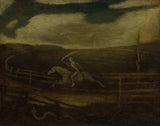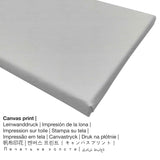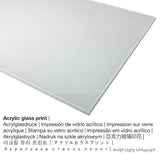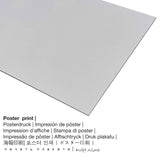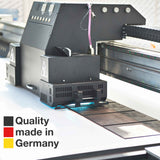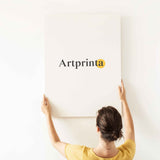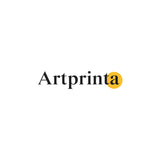Albert Pinkham Ryder, 1908 - Ọsọ Ọsọ (Ọnwụ na Ịnyịnya Pale) - mbipụta nka mara mma.
Ụtụ gụnyere. Mbupu gbakọrọ na ndenye ọpụpụ.
Ozi nka nka izizi dị ka ụlọ ngosi nka weputara (© Nwebiisinka - Ụlọ ihe ngosi nka nke Cleveland - Velọ ihe ngosi nka nke Cleveland)
Ryder’s subject was inspired by a horse race that took place in New York during 1888. One of the artist’s friends wagered $500 on the race and then committed suicide after the horse lost. Medieval symbolism infuses the composition: death appears as a skeleton on horseback holding a scythe with which he cuts down the living, while a snake-a sign of temptation and evil-slithers in the foreground. An intense man, Ryder worked on the painting for several years and was deeply reluctant to part with it.
Nkọwapụta nka nka
| Aha ọrụ nka: | "The Race Track (Death on a Pale Horse)" |
| Nhazi nka: | sere |
| Otu sara mbara: | nkà nke oge a |
| Nhazi oge: | 20th narị afọ |
| Emepụtara n'afọ: | 1908 |
| Afọ nka: | karịa afọ 110 |
| Agba na: | mmanụ na kwaaji |
| Akụkụ ihe osise izizi: | Nhazi: 84,5 x 102 x 6,5 cm (33 1/4 x 40 3/16 x 2 9/16 na); Edebereghị: 70,5 x 90 cm (27 3/4 x 35 7/16 na) |
| Ederede nka nka izizi: | signed lower left: "A. P. Ryder" |
| Egosiputara na: | Velọ ihe ngosi nka nke Cleveland |
| Ebe ngosi nka: | Cleveland, Ohio, United States nke America |
| Ebe nrụọrụ weebụ ihe ngosi nka: | Velọ ihe ngosi nka nke Cleveland |
| Ụdị nka nka: | ngalaba ọha |
| Site n'aka: | Velọ ihe ngosi nka nke Cleveland |
| kreditline ọrụ nka: | Ịzụta n'aka JH Wade Fund |
Ozi ndabere izugbe gbasara onye na-ese ihe
| Ihe nkiri: | Albert Pinkham Ryder |
| A makwaara dịka: | Albert Pinkham Ryder, ryder a.p., Ryder Albert P., Ryder Albert Pinkham, ryder a.p., albert ryder, ryder albert, Ryder, a.p. ryder |
| okike onye nka: | nwoke |
| Obodo onye nka: | American |
| Ọrụ: | onye na-ese ihe, onye na-ese ihe |
| Obodo onye nka: | United States |
| nhazi ọkwa: | omenkà nke oge a |
| Ụdị nke onye na-ese ihe: | Akara |
| Nwụrụ na afọ nke: | 70 afọ |
| Afọ ọmụmụ: | 1847 |
| Ebe omuma: | New Bedford, Bristol County, Massachusetts, Njikota Obodo Amerika |
| Afọ ọnwụ: | 1917 |
| Obodo ọnwụ: | Elmhurst, New York City, New York steeti, United States, agbataobi |
Ngwaahịa a
| Nkewa bipụta: | ezi nka mmeputakwa |
| Usoro mmeputakwa: | dijitalụ mmeputakwa |
| Usoro mmepụta: | Mbipụta UV ozugbo (mbipụta dijitalụ) |
| Mmalite ngwaahịa: | German mere |
| Stockdị ngwaahịa: | a na-achọ |
| Ojiji ngwaahịa: | mgbidi mma, art ebipụta gallery |
| Nhazi nka nka: | usoro odida obodo |
| Oke akụkụ: | 1.2: 1 - ( Ogologo: obosara) |
| Nkọwa: | ogologo bụ 20% ogologo karịa obosara |
| Akụrụngwa ị nwere ike ịhọrọ site na: | acrylic glass print (nwere ezigbo mkpuchi iko), mbipụta akwụkwọ mmado (akwụkwọ kwaaji), mbipụta kanvas, mbipụta ọla (aluminium dibond) |
| Nhọrọ nha nke akwa akwa n'elu etiti ihe na-agbatị (mbipụta kwaaji): | 60x50cm - 24x20", 120x100cm - 47x39", 180x150cm - 71x59" |
| Acrylic glass print (nwere ezigbo mkpuchi iko) nhọrọ: | 60x50cm - 24x20", 120x100cm - 47x39" |
| Nhọrọ nha nke akwụkwọ mmado (akwụkwọ kwaaji): | 60x50cm - 24x20", 120x100cm - 47x39" |
| Mpempe aluminom (aluminium dibond ihe) nha: | 60x50cm - 24x20", 120x100cm - 47x39" |
| Nhazi nke nnomi nka: | enweghị etiti |
Họrọ ụdị ngwa ngwaahịa ọkacha mmasị gị
In the product dropdown lists you can pick your favorite material and size. You can choose your your favorite size and material among the following options:
- Mbipụta aluminom (aluminium dibbond): An Aluminium Dibond print is a material with a true depth effect. The Aluminium Dibond Print is your perfect introduction to fine art replicas on alu. The colors of the print are bright and luminous in the highest definition, the details of the print appear very clear. This UV print on aluminium is the most popular entry-level product and is an extremely stylish way to showcase art, since it puts all of the viewer’s focus on the image.
- Kwaaji: The UV printed canvas material applied on a wood frame. A canvas of your favorite artwork will give you the unique chance of turning your own art print into a large size collection piece as you know from galleries. Canvas prints are relatively low in weight. That means, it is quite simple to hang your Canvas print without the support of additional wall-mounts. Hence, canvas prints are suitable for any type of wall in your home.
- Glass acrylic ebipụtara nwere mmetụta na-egbuke egbuke: A glossy print on acrylic glass, which is sometimes labelled as a print on plexiglass, makes your favorite artwork into stunning home decoration. The major upside of a plexiglass art print is that sharp contrasts as well as painting details will be more identifiable due to the subtle tonal gradation.
- Mbipụta akwụkwọ mmado (ihe kwaaji): Our poster print is a printed canvas paper with a slightly rough texture on the surface, which resembles the actual artwork. Please note, that depending on the absolute size of the poster print we add a white margin 2-6 cm round about the print, which facilitates the framing with a custom frame.
Nchịkọta nke oyiri
This 20th century masterpiece called "The Race Track (Death on a Pale Horse)" was made by the symbolist master Albert Pinkham Ryder in 1908. Ụdị nke masterpiece nwere nha ndị a: Nhazi: 84,5 x 102 x 6,5 cm (33 1/4 x 40 3/16 x 2 9/16 na); Edebereghị: 70,5 x 90 cm (27 3/4 x 35 7/16 na). Mmanụ na kwaaji was applied by the North American artist as the technique for the masterpiece. The artwork's inscription is the following - signed lower left: "A. P. Ryder". Akụkụ nka gụnyere na Ụlọ ihe ngosi nka nke Cleveland art collection. With courtesy of: The Cleveland Museum of Art (licensed: public domain). In addition to that, the artwork has the following creditline: Ịzụta n'aka JH Wade Fund. Ọzọkwa, itinye n'usoro mmepụta dijitalụ na-abanye odida obodo usoro na nwere akụkụ ruru nke 1.2: 1, meaning that the length is 20% longer than the width. The artist, painter Albert Pinkham Ryder was an artist from United States, whose style can primarily be attributed to Symbolism. The American painter was born in 1847 in New Bedford, Bristol county, Massachusetts, United States and died at the age of 70 in the year 1917 in Elmhurst, New York City, New York state, United States, neighborhood.
Nkwupụta iwu: We try in order to depict the art products as clearly as possible and to demonstrate them visually. Nonetheless, the tone of the printing material, as well as the printing might diverge marginally from the image on the device's monitor. Depending on the screen settings and the nature of the surface, colors may not be printed one hundret percent realistically. Considering that our art prints are processed and printed by hand, there might also be slight discrepancies in the size and exact position of the motif.
Ederede a bụ ikike ọgụgụ isi ma chekwaa ya site na nwebisiinka © | Artprinta.com (Artprinta)

